 W
WThe Musée de l'Armée is a national military museum of France located at Les Invalides in the 7th arrondissement of Paris. It is served by Paris Métro stations Invalides, Varenne, and La Tour-Maubourg.
 W
WThe Musée des Arts Décoratifs is a museum dedicated to the exhibition and preservation of the decorative arts. Located at 107 Rue de Rivoli in the city’s 1st arrondissement, the museum occupies the most north-western wing of the Palais du Louvre, known as the Pavillon de Marsan . With over one million objects in its collection, the Musée des Arts Décoratifs is the largest museum of decorative arts in continental Europe.
 W
WThe Château de Beaucaire is a ruined castle in the commune of Beaucaire in the Gard département of France.
 W
WThe Musée Carnavalet in Paris is dedicated to the history of the city. The museum occupies two neighboring mansions: the Hôtel Carnavalet and the former Hôtel Le Peletier de Saint Fargeau. On the advice of Baron Haussmann, the civil servant who transformed Paris in the latter half of the 19th century, the Hôtel Carnavalet was purchased by the Municipal Council of Paris in 1866; it was opened to the public in 1880. By the latter part of the 20th century, the museum was full to capacity. The Hôtel Le Peletier de Saint Fargeau was annexed to the Carnavalet and opened to the public in 1989.
 W
WThe Catacombs of Paris are underground ossuaries in Paris, France, which hold the remains of more than six million people in a small part of a tunnel network built to consolidate Paris' ancient stone quarries. Extending south from the Barrière d'Enfer former city gate, this ossuary was created as part of the effort to eliminate the city's overflowing cemeteries. Preparation work began not long after a 1774 series of gruesome Saint Innocents-cemetery-quarter basement wall collapses added a sense of urgency to the cemetery-eliminating measure, and from 1786, nightly processions of covered wagons transferred remains from most of Paris' cemeteries to a mine shaft opened near the Rue de la Tombe-Issoire.
 W
WThe Château de Flers is a château located in Villeneuve d'Ascq, in the Nord department of France. It hosts the Château de Flers museum and the tourism office of Villeneuve d'Ascq city. The château is named after a former nearby village of Flers-lez-Lille.
 W
WThe Citadel of Besançon is a 17th-century fortress in Franche-Comté, France. It is one of the finest masterpieces of military architecture designed by Sébastien Le Prestre de Vauban. The Citadel occupies 11 hectares on Mount Saint-Etienne, one of the seven hills that protect Besançon, the capital of Franche-Comté. Mount Saint-Etienne occupies the neck of an oxbow formed by the river Doubs, giving the site a strategic importance that Julius Caesar recognised as early as 58 BC. The Citadel overlooks the old quarter of the city, which is located within the oxbow, and has views of the city and its surroundings.
 W
WThe Cité nationale de l'histoire de l'immigration is a museum of immigration history located in the 12th arrondissement of Paris at 293, avenue Daumesnil. The nearest métro station is Porte Dorée. It is open daily except Monday; an admission fee is charged.
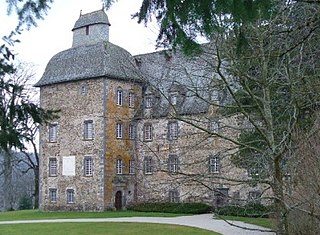 W
WThe Château de Conros is a medieval castle, later heavily modified, situated in Arpajon-sur-Cère in the Cantal département of France.
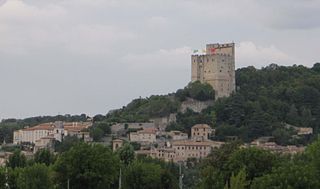 W
WThe Tour de Crest is the imposing vestige of a castle - the Château de Crest - in the commune of Crest in the Drôme département of France, one of the highest keeps in Europe, if not the highest.
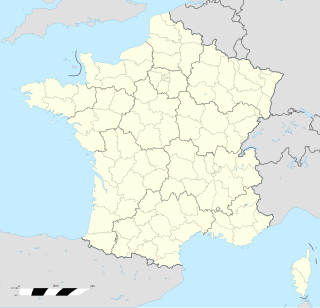 W
WEscal'Atlantic, is a museum that explores the historic ocean liner experience in Saint-Nazaire, France. The museum is found inside the former German World War II submarine pen in the harbour of the city port. It tells the history of the ocean liner, allowing the visitor to wander the insides of an "ocean liner" from the past by visiting areas of a vessel and by means of artefacts.
 W
WThe Musée Grévin is a wax museum in Paris located on the Grands Boulevards in the 9th arrondissement on the right bank of the Seine, at 10, Boulevard Montmartre, Paris, France. It is open daily; an admission fee is charged. The musée Grévin also has locations in Montreal and Seoul.
 W
WThe Musée historique is one of the three museums of Haguenau, France. It was established in 1900 and inaugurated in 1905, when Haguenau was a German town and part of Alsace-Lorraine. In spite of its name, it is as much an art museum as a museum dedicated to History.
 W
WThe Musée d'art et d'histoire de Lisieux is the city museum of the town of Lisieux, located in the Calvados department of the Normandy region, in northwestern France.
 W
WThe château fort de Lourdes is a historic castle located in Lourdes in the Hautes-Pyrénées département of France. It is strategically placed at the entrance to the seven valleys of the Lavedan. Since 1933, it has been listed as a monument historique by the French Ministry of Culture.
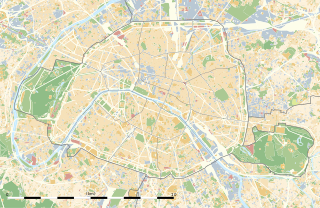 W
WThe Louvre, or the Louvre Museum, is the world's largest art museum and a historic monument in Paris, France. A central landmark of the city, it is located on the Right Bank of the Seine in the city's 1st arrondissement. Approximately 38,000 objects from prehistory to the 21st century are exhibited over an area of 72,735 square meters. In 2019, the Louvre received 9.6 million visitors, making it the most visited museum in the world.
 W
WThe Manécanterie is an ancient monument situated in Lyon in Saint Jean district, in the 5th arrondissement of Lyon. It is placed side by side to the south southwest of the cathedral Saint Jean and is a part of the former convent of the cathedral. This small Romanesque building served first as dining hall to the canons of Saint Jean, before becoming a parish choir school, namely a school for the singing of the clergy.
 W
WThe Museum of Maurice Dufresne is a technological history museum located in the mill at Marnay, near the Château of Azay-le-Rideau, France. It has acquired numerous important objects displayed in vast buildings containing some 25 rooms. The museum pieces are presented thematically: agricultural machines, silk and textile industries, musketry, hydraulic power, etc.
 W
WMémorial de la Shoah is the Holocaust museum in Paris, France. The memorial is in the district of Le Marais, in the third and fourth arrondissement, which had a large Jewish population at the beginning of World War II.
 W
WThe Musée d'Art et d'Histoire, is a museum located in the historical city of Saint-Denis, France, in the northern outskirts of Paris.
 W
WThe Musée de l'Ancien Évêché is a departmental museum located in Grenoble, France and dedicated to the Isère heritage through the history of its Bishop's palace. Inaugurated in 1998, it is settled in the former Bishop's palace, near Grenoble Cathedral. The museum gives access to the remains of an early Christian baptistry and to a section of the vestiges of the Gallo-Roman wall in the basement of the building.
 W
WThe Musée de la Révolution française is a departmental museum in the French town of Vizille, 15 kilometres (9.3 mi) south of Grenoble on the Route Napoléon. It is the only museum in the world dedicated to the French Revolution.
 W
WThe Musée des Archives Nationales, formerly known as the Musée de l'Histoire de France, is a state museum of French history operated by the Archives Nationales. The museum features exhibitions drawn from the collections of the government archives and aims to provide document-based perspective on France’s history and the evolution of French society. It is housed in the Hôtel de Soubise in the Marais neighborhood in the 3rd arrondissement of Paris, France. It was first established under Napoleon III in 1867 with the direction of Léon de Laborde.
 W
WThe Musée Rolin is an art museum in Autun, Burgundy, France.
 W
WMusée Saint-Raymond is the archeological museum of Toulouse, opened in 1892. The site originally was a necropolis, and in later constructions was a hospital for the poor and pilgrims, prison, student residence, stables, barracks and presbytery, eventually becoming a museum in 1891. It is housed in the former Saint-Raymond university college dating from the sixteenth century that borders Basilica of Saint-Sernin.
 W
WThe Museum of Grenoble is a municipal museum of Fine Arts and antiquities in the city of Grenoble in the Isère region of France.
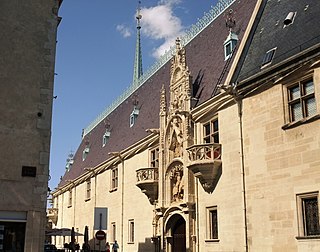 W
WThe Ducal Palace of Nancy is a former princely residence in Nancy, France, which was home to the Dukes of Lorraine. It houses the Musée Lorrain, one of Nancy's principal museums, dedicated to the art, history and popular traditions of Lorraine until the early 20th century. It has been listed since 1840 as a monument historique by the French Ministry of Culture.
 W
WThe Pavillon de l'Arsenal is the Paris Center for architecture and urbanism, a center for urban planning and museum located in the 4th arrondissement at 21, boulevard Morland, Paris, France. It is open daily except Mondays; admission is free.
 W
WThe municipal museum of Saverne, a small town in the Bas-Rhin department of France, is the oldest museum in the historic Alsace region outside of Strasbourg and Colmar, having been founded in 1858. It is located in the former Rohan Castle since 1952.
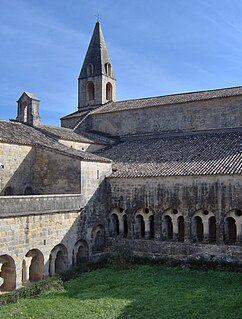 W
WThoronet Abbey is a former Cistercian abbey built in the late twelfth and early thirteenth century, now restored as a museum. It is sited between the towns of Draguignan and Brignoles in the Var Department of Provence, in southeast France. It is one of the three Cistercian abbeys in Provence, along with the Sénanque Abbey and Silvacane, that together are known as "the Three Sisters of Provence."
 W
WThe Tour Jean-sans-Peur or Tour de Jean sans Peur, located in the 2nd arrondissement of Paris, is the last vestige of the Hôtel de Bourgogne, the residence first of the Counts of Artois and then the Dukes of Burgundy. The tower contained bed chambers and the grand stairway of the original residence, which stood next to it. It was completed between 1409–1411 by Jean sans Peur. The original hôtel occupied about a hectare of land, the boundaries of which are now marked by the rues Étienne Marcel, Montorgueil, Saint-Sauveur, and Saint-Denis. The tower itself is located at 20 rue Étienne Marcel, in the courtyard of an elementary school. It is one of the best surviving examples of medieval residential architecture in Paris. The tower is open to the public and presents changing expositions on life in the Middle Ages.
 W
WThe Vesunna Gallo-Roman Museum is a museum of Gallo-Roman art and archaeology in the town of Périgueux, located in the French department of the Dordogne. The Gallo-Roman ruins covered by a glass museum was constructed to protect a historical monument of France.
 W
WVillage des Bories is an open-air museum of 20 or so dry stone huts located 1.5 km west of the Provençal village of Gordes, in the Vaucluse department of France. The area was once an outlying district of the village, under the official name of 'Les Savournins', while the grouping of huts were called 'Les Cabanes' in local parlance.
 W
WThe Virtual Museum of Protestantism, created in 2003 by the Fondation pasteur Eugène Bersier, recounts the history of Protestantism in France from the 16th century to the present.
 W
WThe Musée Antoine Vivenel is the municipal museum of the city of Compiègne in northern France, located at 2, rue d'Austerlitz, 60200 Compiègne. It was founded in 1839, following an important gift by Antoine Vivenel, architect and art collector.